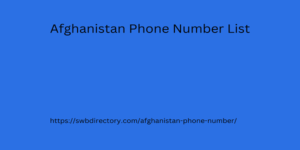Post by samiul114111 on Sept 11, 2024 4:35:43 GMT
Lead is renowned for its effectiveness in blocking ionizing radiation, such as X-rays and gamma rays, due to its high density and atomic weight. This property makes it a standard choice for radiation shielding in medical and nuclear settings. However, when it comes to electromagnetic fields (EMF) radiation from cell phones, which is a type of non-ionizing radiation, the question arises: Does lead block EMF radiation effectively?
Cell phones emit radiofrequency (RF) radiation, a form of non-ionizing electromagnetic radiation. Unlike ionizing radiation, RF radiation does not have enough energy to ionize atoms or molecules or cause direct damage Afghanistan Phone Number List to DNA. The potential health effects of RF radiation are still under investigation, with ongoing research into its long-term impact on health. Despite this, many people seek ways to reduce their exposure to RF radiation, leading to interest in various shielding materials.
Lead’s ability to block radiation is well-established in the context of ionizing radiation. Its dense atomic structure allows it to absorb and deflect high-energy particles, making it effective at preventing the penetration of ionizing radiation. However, non-ionizing radiation, such as RF radiation, interacts with materials differently. RF radiation is characterized by its lower energy levels and longer wavelengths compared to ionizing radiation, which means that the mechanisms for blocking or attenuating RF radiation differ.

Although lead can block some RF radiation due to its density, it is not particularly effective for this purpose. Materials like copper and aluminum are more commonly used for RF shielding because they interact more effectively with electromagnetic fields. These materials are able to reflect and scatter RF radiation more efficiently than lead. They are also more practical for use in everyday products, such as phone cases and shielding fabrics, designed to reduce exposure to RF radiation.
In addition to its limited effectiveness, lead poses significant health risks. Lead is a toxic substance that can cause severe health problems, including neurological damage, kidney issues, and developmental delays, particularly in children. Prolonged exposure to lead can lead to poisoning, making it unsuitable for consumer products that come into regular contact with the human body, such as phone cases.
In conclusion, while lead is effective at blocking ionizing radiation, it is not a practical or efficient material for blocking EMF radiation from cell phones. The properties of RF radiation require materials that reflect or scatter electromagnetic waves more effectively, such as copper and aluminum. Additionally, the health risks and impracticality of using lead further diminish its suitability for shielding against cell phone radiation. Safer and more effective alternatives should be utilized to reduce RF exposure from cell phones.
Cell phones emit radiofrequency (RF) radiation, a form of non-ionizing electromagnetic radiation. Unlike ionizing radiation, RF radiation does not have enough energy to ionize atoms or molecules or cause direct damage Afghanistan Phone Number List to DNA. The potential health effects of RF radiation are still under investigation, with ongoing research into its long-term impact on health. Despite this, many people seek ways to reduce their exposure to RF radiation, leading to interest in various shielding materials.
Lead’s ability to block radiation is well-established in the context of ionizing radiation. Its dense atomic structure allows it to absorb and deflect high-energy particles, making it effective at preventing the penetration of ionizing radiation. However, non-ionizing radiation, such as RF radiation, interacts with materials differently. RF radiation is characterized by its lower energy levels and longer wavelengths compared to ionizing radiation, which means that the mechanisms for blocking or attenuating RF radiation differ.

Although lead can block some RF radiation due to its density, it is not particularly effective for this purpose. Materials like copper and aluminum are more commonly used for RF shielding because they interact more effectively with electromagnetic fields. These materials are able to reflect and scatter RF radiation more efficiently than lead. They are also more practical for use in everyday products, such as phone cases and shielding fabrics, designed to reduce exposure to RF radiation.
In addition to its limited effectiveness, lead poses significant health risks. Lead is a toxic substance that can cause severe health problems, including neurological damage, kidney issues, and developmental delays, particularly in children. Prolonged exposure to lead can lead to poisoning, making it unsuitable for consumer products that come into regular contact with the human body, such as phone cases.
In conclusion, while lead is effective at blocking ionizing radiation, it is not a practical or efficient material for blocking EMF radiation from cell phones. The properties of RF radiation require materials that reflect or scatter electromagnetic waves more effectively, such as copper and aluminum. Additionally, the health risks and impracticality of using lead further diminish its suitability for shielding against cell phone radiation. Safer and more effective alternatives should be utilized to reduce RF exposure from cell phones.
